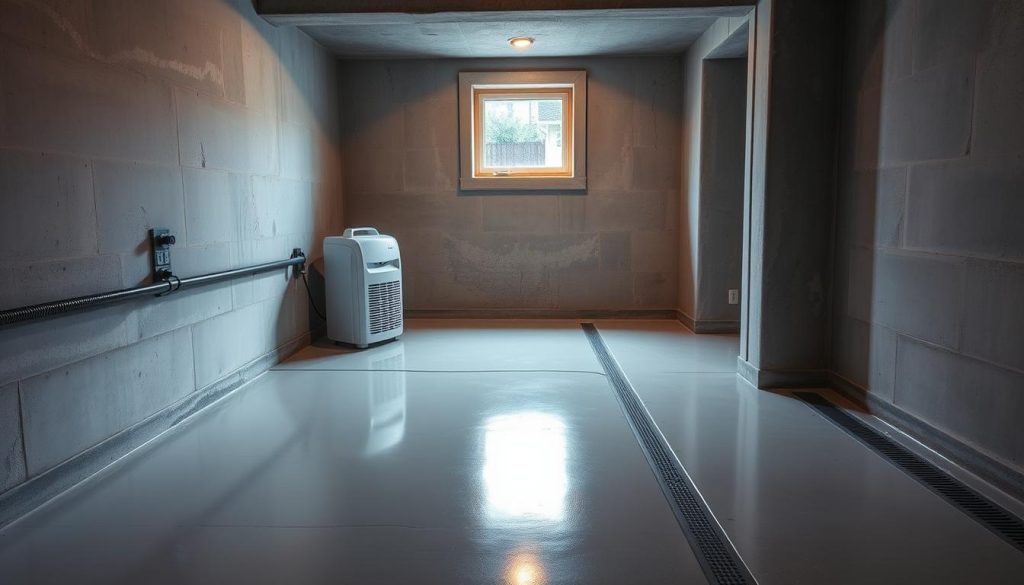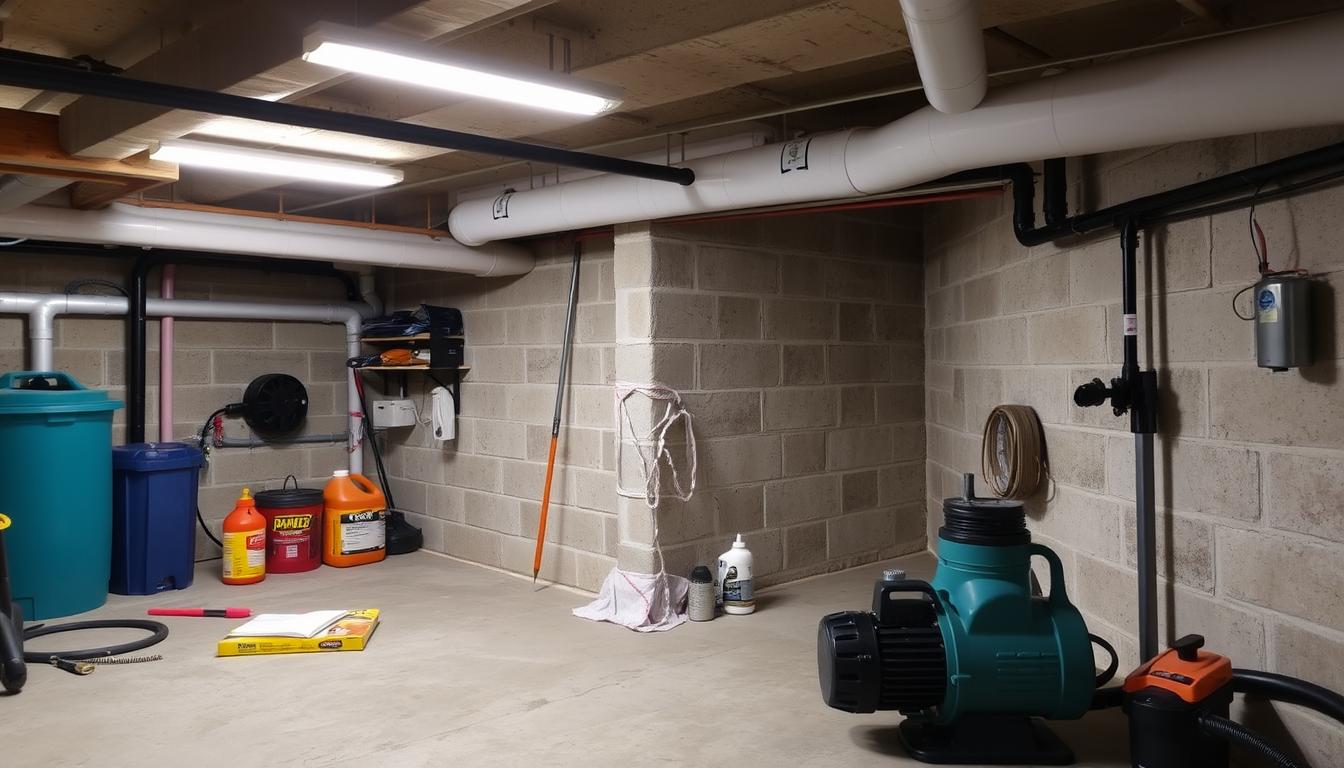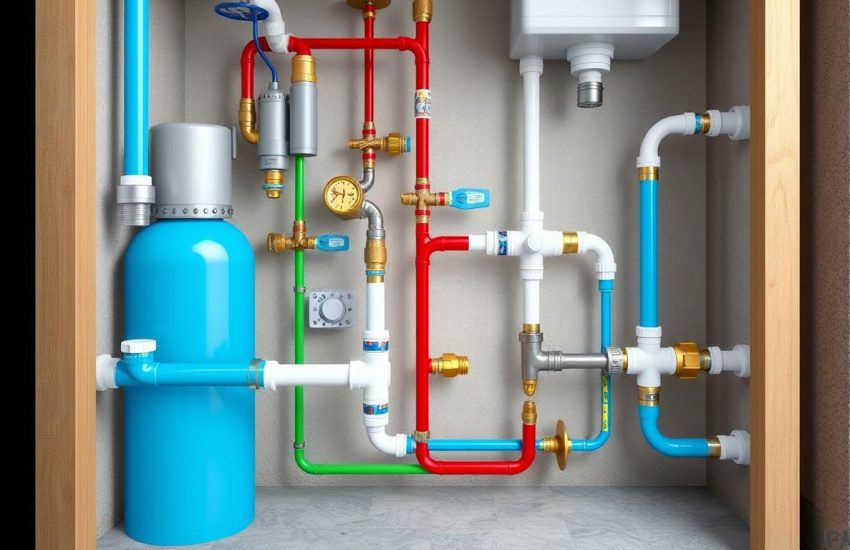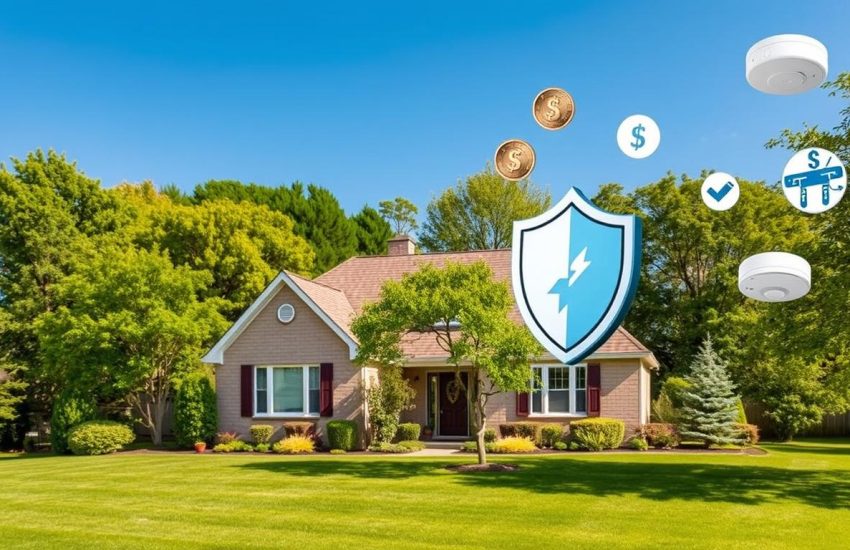Basement Waterproofing: A Complete Guide for Homeowners
Basement Waterproofing: A Complete Guide for Homeowners
Every homeowner knows keeping their basement dry and healthy is crucial. Basement waterproofing prevents water damage. It protects your home and health, making living better.
Water can cause mold, damage the foundation, and ruin things over time. Waterproofing stops these problems. It keeps your home and family safe.
Look for signs like mold, musty smells, and leaks. These mean you might have water problems. Fixing these fast can save you from big, expensive repairs later.
Here are the costs and services companies like Acculevel offer since 1996:
| Service | Cost Range |
|---|---|
| Epoxy Crack Filling | $800 to $1,500 per crack |
| Exterior French Drain Installation | $10 to $100 per linear foot |
| Exterior Liquid Membrane Waterproofing | $3 to $6 per square foot |
| Interior Waterproof Paint | $1 to $8 per square foot |
| Minor Leak Repairs | $250 per leak |
| Sump Pump Installation | $1,500 to $2,500 |
Stopping water damage early is vital. Sump pumps and French drains help a lot. They keep your home safe from water.
Pests love damp places, and this can damage wood. Keeping your basement dry stops them. This saves your home from harm.
Waterproofing your basement is smart. It stops current and future problems. This keeps your home strong and safe for years.
Why Focus on Basement Waterproofing?
Water damage is a big risk to homes. This makes basement waterproofing essential. It protects your home’s structure and value. Early action helps prevent foundation issues and costly repairs.
Mold prevention benefits from waterproofing too. It keeps moisture out, stopping mold and mildew growth. Mold and mildew can cause health problems like breathing issues and allergies. Sealing moisture entry points makes your basement healthier and more useful.
| Issue | Impact | Waterproofing Benefits |
|---|---|---|
| Water Damage to Foundation | Erosion and structural instability | Sealants and membranes prevent water infiltration |
| Hydrostatic Pressure | Cracked or bowed walls | Reduces pressure on foundation walls |
| Freeze-Thaw Cycles | Potential cracks and damage from expansion | Prevents water from freezing in and around the foundation |
| Mold and Mildew Growth | Health risks and damage to belongings | Controls moisture, preventing mold formation |
Boosting property value is another key reason for basement waterproofing. A dry basement improves your home’s marketability. It reassures buyers that the home is in good shape.
Experts like Andrew A. Altman Sr. back waterproofing strongly. His firm, Best Buy Waterproofing, has top ratings and many great reviews. These show the value of professional waterproofing for homeowners.
DIY vs Professional Help
Homeowners have a big choice between DIY basement waterproofing and professional waterproofing expertise. They must think about how bad the moisture issue is, the skills needed, and how it affects property value.
Doing it yourself can save money and feels good. There are many help options, like online or in stores. But, waterproofing can be tricky. Trying to save now might cost more later if it’s not done right.
On the other side, professional help has clear benefits. Experts find the real problem and fix it for good. They also offer warranties, which protect your investment.
| Aspect | DIY Basement Waterproofing | Professional Waterproofing |
|---|---|---|
| Cost | Lower initial costs, potential hidden expenses | Higher initial costs, long-term savings |
| Time Commitment | Varies based on homeowner’s ability | Usually faster due to expertise |
| Risk of Failure | Higher, depending on skill level | Lower, professional diagnosis and application |
| Long-Term Effectiveness | Can be lower unless done correctly | High, with guarantees and follow-ups |
The choice between DIY basement waterproofing and professional waterproofing expertise depends on a full look at the work needed. Think about your skills, money, and how it impacts your home’s value. DIY might work for small issues. But, for big or important jobs, you need professionals.
How to Save Money
When looking at affordable basement waterproofing, it’s vital to balance cost with quality. This balance helps extend your budget. By choosing cost-effective methods, homeowners can save money on basement waterproofing. At the same time, they keep their basements dry and safe.
Start your budgeting with preventive actions. These can greatly cut down on the need for big repairs. A DIY task like adding gutters and extending downspouts ten feet from your home helps manage rainwater. This can prevent expensive water damage.
- Regular upkeep, like bi-annual gutter cleaning, fights water buildup near your foundation.
- Making landscape changes to improve water runoff is a cost-effective and crucial step.
Using high-quality sealants and water repellents might seem expensive at first. But they last longer and protect better, saving money on future basement repairs. Likewise, sump pump installation costs more up front. However, it protects against pricy water damage long-term.
| Waterproofing Solution | Initial Cost | Long-term Savings |
|---|---|---|
| High-Quality Sealant | Higher | Decreased repair costs |
| Sump Pump Installation | Higher | Prevents costly damages |
| Regular Maintenance | Low | Extends lifespan of waterproofing |
Vapor barriers add more defense against moisture in your basement. They are an affordable basement waterproofing choice, great in humid places. This method stops moisture from getting in, preventing bigger, expensive problems later.
Talking to an expert, like U.S. Waterproofing, before deciding on a method is wise. They offer advice that suits your budget and needs. This ensures you make smart choices for your home.

Step-by-Step Upgrades
It’s really important to plan well for effective exterior waterproofing and interior waterproofing. Doing so keeps your basement dry. This guide shows how to protect your home and keep its value high. It helps avoid dampness problems. Here’s what you can do:
- Examine the Exterior: First, look around the outside of your house. Check for any damage that could let water in. This means looking for cracks or gaps. Then apply special coatings to keep your basement dry from outside.
- Upgrade Drainage Systems: Bad drainage can make water gather around your house. Make sure gutters and downspouts are working right. They should move water away from your house. You might also put in a drain system around your basement for extra protection.
- Seal Interior Surfaces: Inside your basement, fill in any cracks or holes. Use a special waterproof cement. This is a key part of keeping the inside dry.
- Integrate Water Management Solutions: If water keeps getting in, consider an inside drainage system with a sump pump. Always check your sump pump to make sure it works when you need it.
- Maintain Regularly: Always keep gutters clean and watch for moist spots in the basement. Spotting damp early can save you lots of trouble and money.
This table shows big problems from not treating basement dampness. It lists what can go wrong and how to fix it. Regular care and updates are needed:
| Issue | Effects | Solutions |
|---|---|---|
| Mold and Mildew | Discoloration, musty odors, health hazards | Dehumidifiers, improved ventilation, regular cleaning |
| Structural Damage | Collapsing walls, weakened floors | Foundation repairs, interior and exterior waterproofing |
| Water Stains and Efflorescence | Unsightly marks, potential for further damage | Sealing cracks, waterproofing paint |

Doing effective exterior waterproofing, interior waterproofing, and maintaining a dry basement is smart. It keeps your home strong and healthy. Always inspect and fix problems fast. This avoids costly repairs from water and moisture damage.
Final Tips for Success
Keeping a dry basement means always staying vigilant. It starts with controlling indoor humidity and proper ventilation. These steps lessen mold and condensation a lot. About 20% of basements suffering from bad air flow can improve with better circulation. Avoid keeping wet items down there.
Fix leaks quickly. They make a big difference in keeping your basement dry. Using dehumidifiers to keep humidity under 50% is also key. A good slope away from your home’s foundation can prevent 70% of water problems in the basement. Regularly cleaned gutters mean you’re 4 times less likely to have water issues. For big waterproofing jobs, check out expert basement waterproofing advice.
Ready your house for all seasons to avoid water damage. Spring is perfect for roof and gutter checks. Doing these can prevent leaks. Make sure your basement’s sump pump is working well too. Follow a spring maintenance guide for help. DRYLOK products and solid sump pumps are great investments. They protect your basement from moisture well. Knowing when to call pros is a big step towards keeping your home dry and safe.



